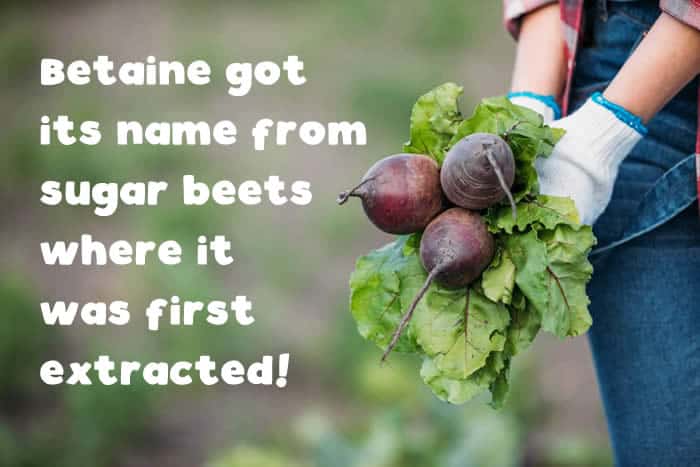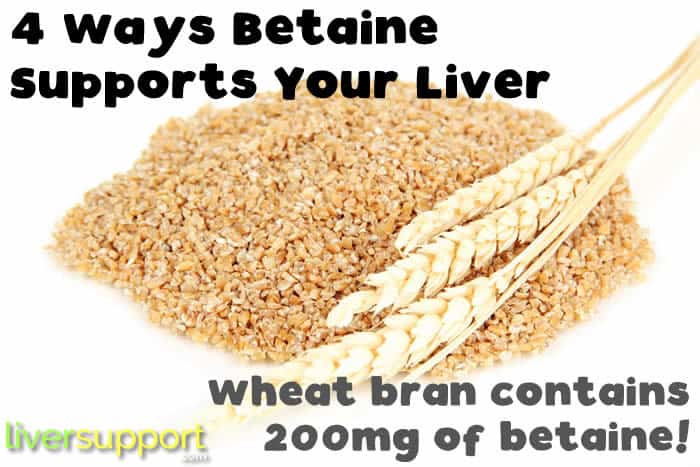
Previous
Yale Researchers Have Found a Drug to Reverse Fatty Liver

Next
9 Tips for Managing the Flu with Liver Disease
4 Ways Betaine Supports Your Liver
Discover what betaine is, the role betaine plays in fighting NAFLD and how it supports the health of your liver – as well as foods that naturally contain betaine.
First Things First: What Is NAFLD?
Nonalcoholic fatty liver disease (NAFLD) refers to a liver which stores excessive fat and is classified as either simple fatty liver disease where no inflammation is present, or NASH, which is a form of hepatitis accompanied by inflammation and fibrosis of the liver. NAFLD is often characterized by insulin abnormalities resulting in glucose metabolism problems, buildup of fatty tissue in the place of healthy liver cells, and accumulation of triglycerides. Neither type of NAFLD is related to excessive alcohol intake, although the condition is aggravated by its consumption. Eventually, unchecked NAFLD can lead to cirrhosis or liver cancer. (1)
NAFLD affects between 30-40% of Americans while NASH affects 3-12% of the population. (1) There is no known treatment for NAFLD besides lifestyle changes and diet, and, of course, aggressive treatment of any co-existing diabetes and heart disease therapy.
However, betaine, a conditionally essential amino acid (essential in times of illness and stress), has been shown to help heal and regenerate damaged liver cells and support a more normal metabolism with a reduction in liver fat in both animal and human clinical trials. (2, 3)
What Is Betaine?
Betaine is a conditionally essential amino acid that has proven benefits in lowering homocysteine and, consequently, risk for heart disease. It also promotes protein synthesis in the body and reduces liver fat in NAFLD and NASH. (2)
Betaine is also known as trimethylglycine and is a derivative of the essential nutrient choline. Choline must be present for betaine to be synthesized within the body. Choline combines with glycine to make betaine.
Betaine is a methyl donor converting homocysteine to methionine and is a patented medication designed for reduction of homocystinuria in those who have a genetic disability that causes elevated levels of homocysteine.
Betaine as a Conditionally Essential Nutrient
Under normal circumstances, betaine is not considered essential because it can be made from choline which is obtained in our diets. Some conditions, however, interfere with this biochemical pathway and then betaine becomes an essential nutrient that must be supplied by the diet. (3) This occurs in heart disease and in NAFLD. Choline is used up in NAFLD through a biochemical pathway that makes it unavailable for betaine synthesis. Thus, betaine is low in the livers of both human and animal subjects with NAFLD. (4, 5)
Betaine Deficiency
Betaine deficiency is found in NAFLD, in those over 50, and in alcoholism. There are no definable symptoms associated with low betaine except possible indigestion.
How Betaine Supports Your Liver
Orally, betaine is used for NAFLD and NASH, although research is conflicting and sparse, primarily due to lack of well-designed clinical trials in humans.
Four potential areas of support have been identified in animal studies for NAFLD: (6)
- Reduction of Fasting Glucose with Betaine in Liver Disease: Betaine reduced fasting glucose to normal and insulin resistance was alleviated after betaine treatment in animal models. While a recent pilot study showed a reduction in fasting glucose in human subjects, it was not deemed significant compared to the controls. (7)
- Reduction of Fasting Insulin with Betaine in Liver Disease: The addition of betaine to insulin resistant cells from NAFLD animals restored insulin sensitivity. Restoration of function was proportional to the amount of betaine added to the cell culture. (6)
- Reduction of Plasma Triglycerides by Betaine: Triglycerides are an independent risk factor for heart disease. Since heart disease is the number one killer of NAFLD patients, this is an important risk factor. Both triglycerides and cholesterol appeared near normal in NAFLD animal models after betaine supplementation. (6)
- Reduction of Hepatic Fat: In both animal and human studies (6, 7, 8), a reduction in hepatic fat was found to be significant after betaine supplementation. This is an encouraging endpoint since it is suggestive of a regression in liver steatosis and an improvement in liver function.
Why the Difference Between Animal and Human Studies on Betaine and NAFLD?
The pilot study conducted on human subjects was, in all fairness, not a good study to compare endpoints achieved with those obtained from animal studies. (8)
- First, study recipients were not screened for the degree of fibrosis of their liver disease and many, if not most, were stage 3 or 4, possibly too late for regeneration of endpoints being studied (insulin, glucose, triglycerides).
- Second, there was a high dropout rate due to gastrointestinal side effects associated with drinking a high dose (20 grams) of betaine in a watery, tasteless solution. A typical dose of betaine for fatty liver disease is 1,000-2,000 mg three times daily. (9)
- Third, detailed diet and exercise diaries were not obtained to determine what the control group might have been doing to improve their profile that would affect statistical differences between the study and the control group. Multiple lifestyle changes such as weight change, an exercise program started or stopped, or a change in diet could all affect the outcomes of the study.
Future studies need to take into consideration the number of patients, the degree of disease severity, lifestyle habits and the bioavailability/dosage of compounds being administered.
How Can I Add Betaine to My Diet?
A diet high in betaine can be good for your liver and has been shown in both animal and human studies to reduce the amount of liver fat and elevated liver enzymes. Traditionally, foods high in betaine are whole grains, beets, spinach, quinoa, bulgur and sweet potatoes. (9) In fact, betaine got its name from sugar beets where it was first extracted!

Foods That Contain Betaine and Support Your Liver (9)
| Food | Serving Size | Betaine Amount |
|---|---|---|
| Wheat Bran | ¼ cup uncooked or 15 grams | 200 mg |
| Quinoa | 1 cup cooked or ¼ cup uncooked | 178 mg |
| Beets | 1 cup raw | 175 mg |
| Spinach | 1 cup cooked | 160 mg |
| Amaranth Grain | 1 cup cooked or ½ cup uncooked | 105 mg |
| Rye Grain | 1 cup cooked or ½ cup uncooked | 123 mg |
| Kamut Wheat Grain | 1 cup cooked or ½ cup uncooked | 105 mg |
| Bulgar Grain | 1 cup cooked or ½ cup uncooked | 76 mg |
| Sweet Potato | 1 medium potato | 39 mg |
| Turkey Breast | 3 ounces | 30 mg |
| Veal | 3 ounces | 29 mg |
| Beef | 3 ounces | 28 mg |
Plus, Natural Wellness’s Clinical Multi-Vitamin, a physician formulated, iron-free multi-vitamin, which provides nutritional supplementation for liver patients, also contains betaine in its ingredient’s list.
How Much Betaine Do I Need to Support My Liver?
There is no set recommended dietary intake for betaine. Including betaine in your diet can help lower homocysteine, an independent risk factor for heart disease, can reduce risk for liver cancer, and decrease liver fat. (10)
If liver problems are your foe, betaine is your friend. Adding a multivitamin with it in and including a diet rich in betaine is beneficial for your health, your heart and your liver.
- Definition & Facts of NAFLD & NASH. (n.d.). In National Institute of Diabetes and Digestive and Kidney Diseases. Retrieved October 30, 2019 from https://www.niddk.nih.gov/health-information/liver-disease/nafld-nash/definition-facts
- Betaine Anhydrous. (n.d.). In TRC Natural Medicines. Retrieved October 28, 2019, from https://naturalmedicines.therapeuticresearch.com/databases/food,-herbs-supplements/professional.aspx?productid=1008
- Anais, A., Bassot, A., Bulteau A., Pirola, L. & Morio, B., (2019, June 16). Glycine metabolism and its alterations in obesity and metabolic diseases. Nutrients, 11(6), 1356. https://doi.org/10.3390/nu11061356
- Kendler, B.S. (2006, January-February). Supplemental conditionally essential nutrients in cardiovascular disease therapy. J Cardiovasc Nurs, 21(1), 9-16. Abstract retrieved from https://www.ncbi.nlm.nih.gov/pubmed/16407731
- Sookolan, S., Puri, P., Castano, G.O., Sciari, R., Mirshahi, F., Snyal, A. J., & Pirola, C.J. (2016, September 12). Nonalcoholic steatohepatitis is associated with a state of betaine-insufficiency. Liver International, 37(4), 611-619. Abstract retrieved from https://onlinelibrary.wiley.com/doi/abs/10.1111/liv.13249
- Kathirvel, E., Morgan, M., Nandgin, G., Sandoval, B.C., Caudill, M.A., Bottiglieri, T., French, S.W. & Morgan, T.R. (2010, August 19). Betaine improves nonalcoholic fatty liver and associated hepatic insulin resistance: a potential mechanism for hepatoprotection by betaine. Am J Physiol Gastrointest Liver Physiol, 299(5), G1068-G1077. http://dx. doi: 1152/ajpgi.00249.2010
- Abdelmalek, M. F., Sanderson, S.O., Angulo, P., Soldevila-Pico, C, Liu, C., Peter, J…. & Lindor, K.D. (2009, November 20). Betaine for nonalcoholic fatty liver disease: results of a randomized placebo-controlled trial. Hepatology, 50(6), 1818-1826. https://doi.org/10.1002/hep.23239
- Abdelmalek, M.E., Angula, P., Jorgensen, R.A., & Sylvestre, P.B. (2001, September). Betaine, a promising new agent for patients with nonalcoholic steatohepatitis: results of a pilot study. Am J Gastroenterol, 96(9), 2711-7. Retrieved from https://www.ncbi.nlm.nih.gov/pubmed/11569700?dopt=Abstract
- Levy, J. (2018, October 24). What is betaine? Benefits, signs of deficiency and food sources. Retrieved 10/28/19 from https://draxe.com/nutrition/what-is-betaine/
- Rui-fen, Z, Xiao-Lin, C, Zhong-quo, Yoa-jun Z., Qiu-ye, L., Gong-cheng L.…& Hui-lian Z. (2017, April 6). Higher dietary intakes of choline and betaine are associated with a lower risk of primary liver cancer: a case control study. Scientific Reports, 7, 679. http://dx. doi: 1038/s41598-017-00773-w






